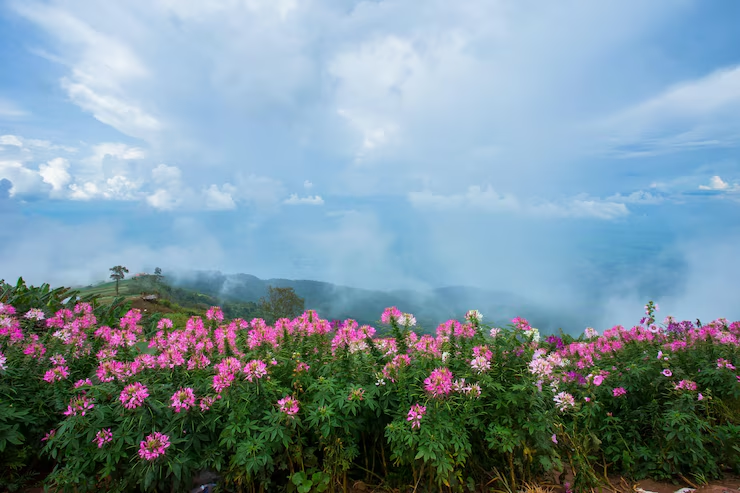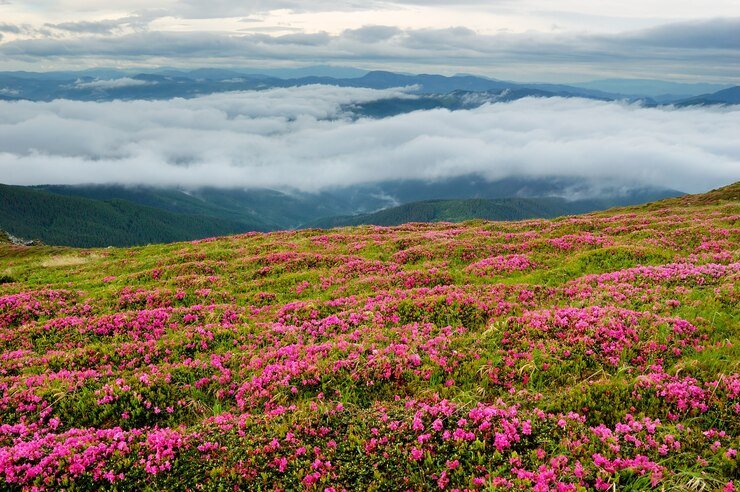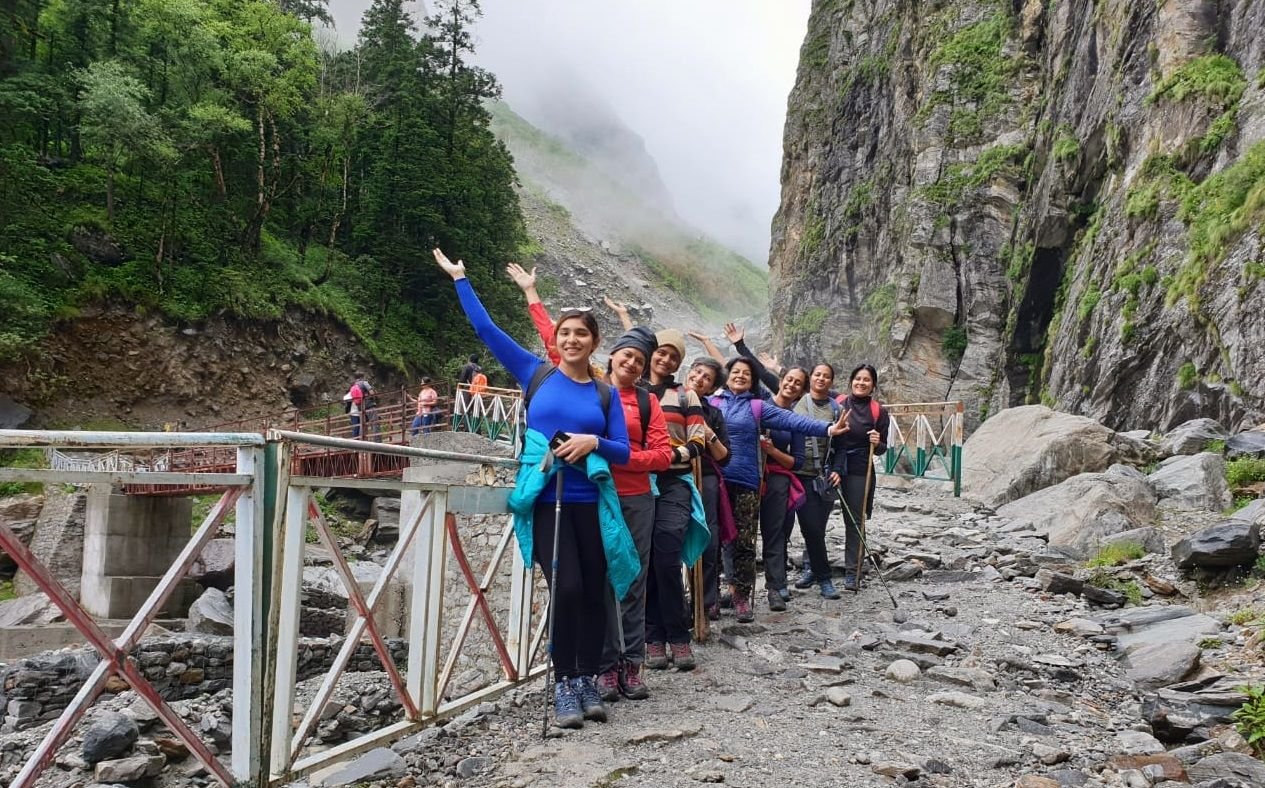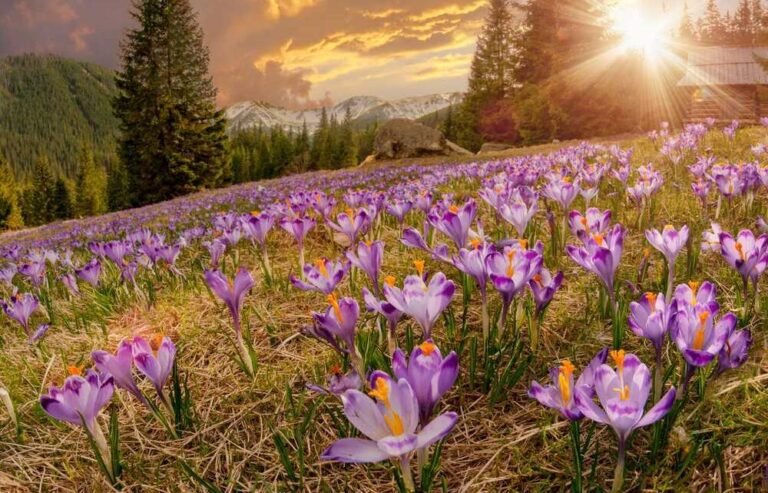Valley of Flowers
 Valley of Flowers Trek – Nature’s Hidden Canvas | Secure Travels
Valley of Flowers Trek – Nature’s Hidden Canvas | Secure Travels
Welcome to the Valley of Flowers National Park, where Mother Nature paints with a palette more vibrant than your imagination. Tucked away in the Chamoli district of Uttarakhand, this hidden Himalayan gem sits at a height of 11,811 feet, offering scenes that don’t look real — more like a dream you’d never want to wake up from. With over 600 rare plant species, endangered animals, and UNESCO World Heritage status, it’s no wonder it’s called “India’s Most Beautiful Monsoon Trek.”
At Secure Travels, we don’t just take you to the Valley of Flowers — we walk with you through its legends, mysteries, colors, and altitudes. Let’s dive into what makes this journey truly unforgettable
 Why is called as the Valley of Flowers?
Why is called as the Valley of Flowers?
That’s precisely what it is: a valley that comes alive with a surreal bloom every monsoon that makes you feel as though you’ve entered a fairy tale. The trail, known locally as “Phoolon ki Ghati,” is encircled by misty peaks and covered in a carpet of multicolored flowers. Photographers thrive on it, scientists adore it, and tourists—well, they keep returning.
This valley is strong in addition to being beautiful. Rare Himalayan flowers with legendary associations can be found there.
Here are some that will make you stop:
Sacred and elusive, Brahma Kamal only blossoms in the dark.
Blue poppies are bold, eye-catching, and as blue as the dawn sky.
Cobra Lily: It’s all drama, but it looks like a cobra ready to strike.
Bistorta Affinis is a thick, pink spike that is visible from a distance.
Wooly, uncommon, and only found above 12,000 feet is the Himalayan Edelweiss.
The soft pink and white blooms of Saxifraga Brunonis literally burst through rocks.
Every flower has a backstory. Every tale has its origins in history, myth, and nature.


🛕 A Trek That’s Spiritual Too
Hemkund Sahib, the world’s highest Gurudwara, is part of your journey. Located at 15,200 ft, this sacred Sikh site is where Guru Gobind Singh is believed to have meditated for years. You’ll feel the silence, serenity, and significance the moment you step near it.
Next up is Lokpal Laxman Temple, nestled by the Hemkund Lake. According to legends, Lord Laxman (brother of Ram) meditated here after the epic battle of Lanka. The energy? You’ll feel it in your bones.
🕰 A Valley That Traveled Through Time
Long before Instagram reels or travel blogs, the Valley of Flowers was whispered about in mythology — known as a haven for fairies and gods. In 1931, two British mountaineers accidentally stumbled upon it while descending from Mt. Kamet. They were stunned, speechless, and gave it a name that stuck. Since then, researchers, botanists, and spiritual seekers have trekked here — each finding their version of the valley’s magic.
🚶 How to Reach Valley of Flowers
The small town of Govindghat is where the trek begins. However, you must first reach your starting point, Rishikesh.
Here’s how:
✈️ By Air: Jolly Grant Airport in Dehradun, which is about 20 kilometers from Rishikesh, is the closest airport.
🚆 By Train: The nearest significant train station is Haridwar Junction, which is roughly 25 kilometers from Rishikesh.
🚍 By Road: All of the major cities in North India are directly connected to Rishikesh by buses and taxis.
The drive to Govindghat is 268 km from Rishikesh and takes about 8 to 9 hours. The trail, the forest, and the flowers are where your true journey starts.


🕒 Best Time to Visit the Valley of Flowers
Here’s the twist: Unlike most Himalayan treks, this one is best done during the monsoon.
🌧️ July to early September is your window.
That’s when the valley is in full bloom, mist hangs gently over the meadows, and the flowers are at their freshest. You’ll walk in light showers, spot wild blooms, and feel the raw energy of nature.
🌦 What’s the Weather Like?
Monsoon doesn’t mean chaos here. It rains, yes — but not constantly. Expect light to moderate showers once every 2–3 days. A good poncho or rain jacket is your best friend.
Day temperature: 14°C to 18°C (cool and pleasant)
Night temperature: 3°C to 6°C (cold enough to need layers)
📍 Valley of Flowers Trek Itinerary with Secure Travels
Here’s what your 6-day journey will look like:
Day 1 – Rishikesh to Govindghat/Pandukeshwar (263 Kms, 9 Hrs Drive Approx)
Overnight stay in Govidghat
Day 2 – Govindghat/Pandukeshwar (2Kms, 10 Min Drive) | Trek to Ghangaria (10-11 km Kms, 6 Hrs trek Approx)
Ghangaria is your base for the next two days
Day 3 – Trek to Valley of Flowers
4 km one way (easy-moderate trail)
Spend time amidst meadows
Return to Ghangaria by evening
Day 4 –Ghangaria to Hemkund Sahib (14 Kms, 9 Hrs Approx) | Back to Ghangaria
Visit Gurudwara + Lokpal Laxman Temple
Return to Ghangaria
Day 5 –Trek back Ghangaria to Pulna (9 Kms, 5 Hrs Approx) | Drive to Govidghat/Pandukeshwar (22 Kms, 1 Hr Drive Approx)
Explore local markets in Joshimath
Day 6 –Govindghat/Pandukeshwar to Rishikesh (262 Kms, 8 Hrs drive Approx)
Trip ends, memories begin

| Feature | Detail |
|---|---|
| Altitude | 14,100 ft (Valley), 15,200 ft (Hemkund Sahib) |
| Trek Duration | 6 Days (Rishikesh to Rishikesh) |
| Trek Level | Easy to Moderate |
| Best Season | July to September |
| Total Trek Distance | Approx. 38 km round trip |
| Mobile Network | Limited (BSNL only in Ghangaria) |
| ATM & Hospital | Only at Joshimath |
| Accommodation | Guesthouses & Camps in Ghangaria |
🎒 What to Pack?
Rain jacket / poncho
Trekking shoes with good grip
Warm thermals, fleece, jacket
Gloves, cap, sunglasses
Reusable water bottle
Basic first aid + medicines
Light backpack (20–30L)
Waterproof bag covers
❤️ Why Trek with Secure Travels?
We don’t just organize treks — we curate experiences. With certified trek leaders, safe stays, and local insights, your journey with Secure Travels is authentic, smooth, and worry-free. Whether you’re a first-timer or a seasoned trekker, we make sure your safety and experience come first.
✅ Small groups
✅ Local support team
✅ Medical backup
✅ Transparent pricing
✅ 24/7 assistance
📞 Ready to Walk Among the Clouds?
Let the Valley of Flowers show you what untouched nature looks like. This isn’t just a trek — it’s a chapter of peace, myths, and vibrant life.
Limited batches run between July and September.
To book your seat, connect with us now:
📧 Email: securetravels9045@gmail.com
📱 WhatsApp/Call: +91 7302011153
🌐 Website: securetravels.in
